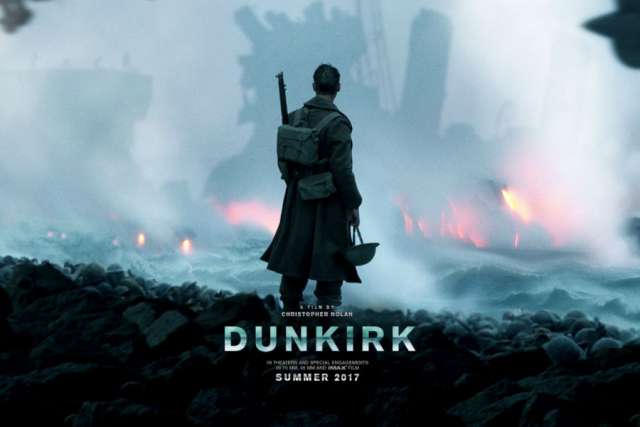By Carl Kozlowski *
The Battle of Dunkirk was one of the most devastating moments for Allied Forces in World War II, resulting in nearly 400,000 British, French and Dutch troops being trapped on a beach outside the French seaport town. With the treacherous waters of the English Channel before them and fears of overwhelming German forces coming to wipe them out by land, they needed to be evacuated.
The unexpected problem was that large rescue ships could not handle the shallow waters near shore, so the call went out from the British government for smaller boats to help save the day. At the same time, the Germans inexplicably decided to stop their land advance and rely on their Luftwaffe air force to kill off the Allies, inadvertently allowing more time for the rescues to occur.
The heroism shown by civilians in saving the soldiers, and the troops’ battle to survive while waiting for help, forms the heart of writer-director Christopher Nolan’s harrowing new epic, “Dunkirk.” Nolan applies the time-bending techniques he has become famous for in such films as “Memento” and “Inception” to thrust viewers straight into the action on land, sea and air by constantly interweaving three different storylines.
The film first follows a young British soldier named Tommy (Fionn Whitehead) as he runs for his life through the streets of Dunkirk, before reaching the beach and being shocked by the sight of the men waiting for rescue. With hundreds of thousands lined up on beaches or trapped on an extended jetty called “The Mole” under the concerned eye of Commander Bolton (Kenneth Branagh), Tommy manages to board a boat but soon finds it under attack as well.
Meanwhile, the citizen-rescuer side is represented by Mr. Dawson (Mark Rylance), an average man who heads off to Dunkirk on his private boat with his teenage son and a local boy named George who leaps aboard. En route, they find a stranded, shell-shocked soldier (Cillian Murphy) and pull him aboard, only to find that his paranoia of returning to Dunkirk puts them at great risk.
In the air, two British pilots are trying to pick off German planes in order to provide cover for the boats and save the awaiting evacuees. The stakes get even higher when one named Farrier (Tom Hardy) realizes his plane is running low on fuel, endangering his own mission as he bravely flies onward.
The events on the beach are shown over the entire week that the troops were awaiting rescue, on the boat over the course of a day, and the air battles over the course of an hour, while managing to bring them all together in the climactic moments. The effect is confusing at times, but overall, it provides an intriguing and unique approach to the timeworn genre of war films.
Nolan has stated his goal in “Dunkirk” is to immerse viewers in the experience of war, more than following the classic approach of creating outsized heroes to root for. The approach works on a visceral level, but jumping among so many characters also leaves the film lacking on an emotional level at times. Overall, though, the technical achievements of the film are so stunning that it becomes a modern classic.
There are numerous sequences throughout that are jaw-dropping, particularly when the Luftwaffe come swooping in from seemingly nowhere at the most unexpected of times. Another scene in which Tommy and a few other soldiers are trapped inside a small boat while unwitting and unseen Germans are making target practice against it and water from high tide is starting to pour in is a masterpiece of claustrophobic terror.
Through it all, Hans Zimmer’s score ratchets up the tension with cacophonous strings during the most desperate moments. As the main leads of the sprawling ensemble, Whitehead and Rylance manage to bring an everyman perspective to their roles, giving the viewers an anchor to focus upon amid the frenetic action.
“Dunkirk” is packed almost beginning to end with peril, but while the action is intense, Nolan avoids graphic bloodshed, keeping this at a PG-13 level that teens can easily watch. In fact, this is a movie that young people should see, as a reminder of the heroism and self-sacrifice that seems to be lacking too often in today’s world.
Ultimately, “Dunkirk” shows that while war can be hell, the bravery and goodness of the common people who saved the soldiers buoyed the Allies’ spirits after a devastating loss and eventually helped turn the tide against the Nazis’ relentless advance. In a current age where wars rage all over the planet, it provides a strong reminder that humanity can still exist amid the horror of war.
* Catholic News Agency columns are opinion and do not necessarily express the perspective of the agency.


